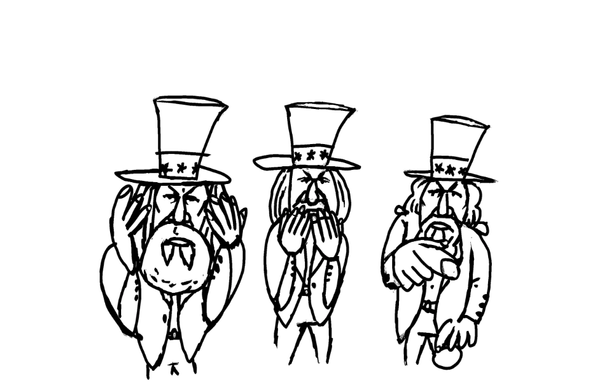When a citizen enlists in the US military, he goes through a period of intensive training. Its primary aim is to melt away the effects and the mindset of civilian life and to forge Americans into soldiers, sailors, airmen, or marines, ready to devote their lives to the organized application of violence on behalf of American interests. This training must sweat and bleed the individual who reports for duty, because the Department of Defense knows that the lives of American citizens—formed in individualism and liberalism—don’t allow for an easy transition into military service. Policymakers would do well to acknowledge this civil-military distinction.
Yet an obsession with diversity increasingly undermines this critical national-security function.
The American military is a professional fighting force built on competencies and values not commonly found in civil society—thankfully so, for we don’t raise our children under the presumption of a violent life, and most don’t even consider joining the military. Because the stakes of military operations are so high, the military must define itself by a commitment to the professional factors that make service members and units more effective. Even though the years of all-out war are beyond our memory, the perils of an uncertain future make the stakes of military policy unquestionably high.
Some would have us believe that a diverse military is somehow the cornerstone of our national security, all the while minimizing any adverse effects associated with diversity, equity, and inclusion practices among the men and women of the armed forces. This position contradicts itself: Either the military’s efforts at diversity serve a critical national need that demands great sacrifices, or they are so insignificant that they aren’t worth their costs to the services’ culture and the taxpayer’s bottom line.
When it comes to policy, the military must maintain a strict separation between values unrelated to the military profession and those values necessary to maintain an effective force. Like a drop of ink in a glass of water, the faintest hint of ideology outside the scope of the military profession will degrade the whole force’s effectiveness. Historical examples from 18th-century France to the Soviet army of the late Cold War attest to the severity of this threat.
“A military consumed by identity politics threatens the integrity of the republic.”
At issue here is much more than the relative quality of military units. A military consumed by identity politics threatens the integrity of the republic. In other sectors of society, the consequences of shirking the primacy of merit amount to a bad hire as university president, or maybe a missed revenue projection for a given fiscal quarter.
Nowhere are the consequences of hiring anyone but those selected for their professional qualifications higher than in the wars our military may soon fight. In May, the Daily Caller reported on the Air Force’s efforts to diversify flight school by creating classes that mirrored the race and gender demographics of the nation. This manipulation of the most critical talent of our military produced consecutive flight-school classes below sustainable levels and far below average. This brutal case study is a harbinger of things to come in a military whose organizing principle is diversity rather than merit.
Before the military embraced the more extreme manifestations of diversity ideology, the institution provided Americans with a glimpse of what a society based on merit but free of discrimination could entail.
President Harry Truman signed Executive Order 9981 on July 26, 1948. It established that there should be “equality of treatment and opportunity in the armed services without regard to race, color, religion, or national origin.” The positive aftermath of the order is hard to believe in light of the turmoil of the 1960s and the race-obsessed culture that followed and endures to the present day. The Army removed race designators from personnel files to ensure nondiscrimination, and the military spent legitimate organizational energy seeking to choose and promote the best, regardless of race. If the common trope of race-blind decisions was ever a reality, it was in the years after Executive Order 9981.
This changed with Robert McNamara’s Pentagon. The most far-reaching racial initiative of this era was McNamara’s Vietnam recruitment plan, Project 100,000. This project aimed to enlist individuals who previously didn’t meet the standard mental and physical criteria for military service by lowering the Armed Forces Qualification Test scores required for enlistment and by relaxing some physical standards.
The year 1971 saw the establishment of the Defense Race Relations Institute, later rebranded as the Defense Equal Opportunity Management Institute. A US Department of Defense joint-services school, DEOMI works in areas of equal opportunity, intercultural communication, religious, racial, gender, ethnic diversity, and pluralism. What policymakers forgot was any appreciation of the military’s unique status as an institution in American life.
To be sure, some conservative circles go too far in insisting that even kindergarten classrooms be pure bastions of cutthroat meritocracy. Yet military affairs must be a place for this rigorous adherence to meritocracy, because the crucible of war gives no quarter to a person or unit that is anything but qualified. Grace and exceptions can be found elsewhere, but not on the training fields, parade grounds, and command centers of a military America needs to be at her best.
